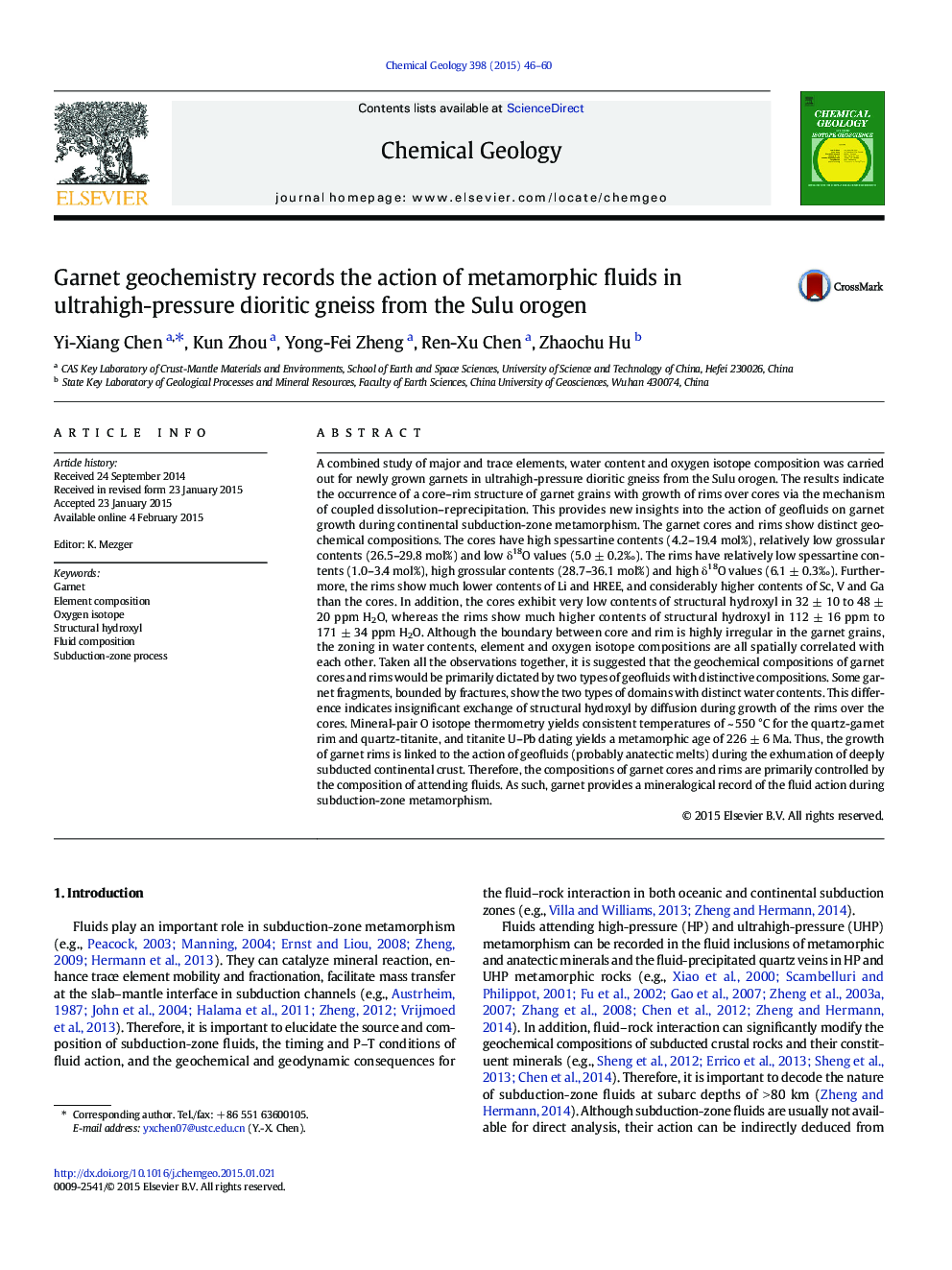| کد مقاله | کد نشریه | سال انتشار | مقاله انگلیسی | نسخه تمام متن |
|---|---|---|---|---|
| 4698609 | 1637575 | 2015 | 15 صفحه PDF | دانلود رایگان |
• Garnets show a core-rim structure with geochemical zoning.
• Garnet rims show higher δ18O values and water contents than garnet cores.
• The difference in the composition of fluids is responsible for the zoning.
• Titanite U–Pb age of 227 ± 18 Ma records the time of garnet overgrowth at fluid action.
• Garnet provides a mineralogical record of fluid action at subduction zone.
A combined study of major and trace elements, water content and oxygen isotope composition was carried out for newly grown garnets in ultrahigh-pressure dioritic gneiss from the Sulu orogen. The results indicate the occurrence of a core–rim structure of garnet grains with growth of rims over cores via the mechanism of coupled dissolution–reprecipitation. This provides new insights into the action of geofluids on garnet growth during continental subduction-zone metamorphism. The garnet cores and rims show distinct geochemical compositions. The cores have high spessartine contents (4.2–19.4 mol%), relatively low grossular contents (26.5–29.8 mol%) and low δ18O values (5.0 ± 0.2‰). The rims have relatively low spessartine contents (1.0–3.4 mol%), high grossular contents (28.7–36.1 mol%) and high δ18O values (6.1 ± 0.3‰). Furthermore, the rims show much lower contents of Li and HREE, and considerably higher contents of Sc, V and Ga than the cores. In addition, the cores exhibit very low contents of structural hydroxyl in 32 ± 10 to 48 ± 20 ppm H2O, whereas the rims show much higher contents of structural hydroxyl in 112 ± 16 ppm to 171 ± 34 ppm H2O. Although the boundary between core and rim is highly irregular in the garnet grains, the zoning in water contents, element and oxygen isotope compositions are all spatially correlated with each other. Taken all the observations together, it is suggested that the geochemical compositions of garnet cores and rims would be primarily dictated by two types of geofluids with distinctive compositions. Some garnet fragments, bounded by fractures, show the two types of domains with distinct water contents. This difference indicates insignificant exchange of structural hydroxyl by diffusion during growth of the rims over the cores. Mineral-pair O isotope thermometry yields consistent temperatures of ~ 550 °C for the quartz-garnet rim and quartz-titanite, and titanite U–Pb dating yields a metamorphic age of 226 ± 6 Ma. Thus, the growth of garnet rims is linked to the action of geofluids (probably anatectic melts) during the exhumation of deeply subducted continental crust. Therefore, the compositions of garnet cores and rims are primarily controlled by the composition of attending fluids. As such, garnet provides a mineralogical record of the fluid action during subduction-zone metamorphism.
Journal: Chemical Geology - Volume 398, 26 March 2015, Pages 46–60
